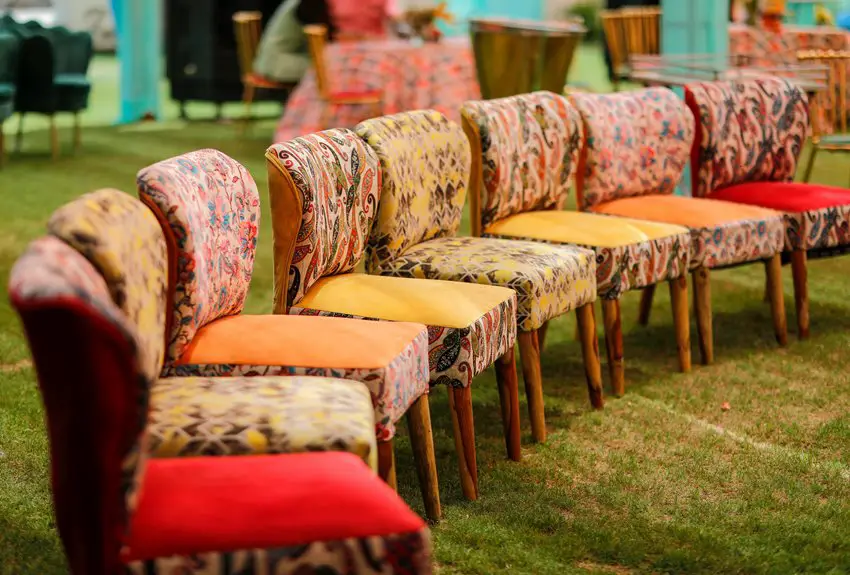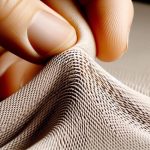You might think lawn fabric is all cotton, but it’s not always that simple. While pure cotton lawn is common for its softness and breathability, lawn fabric also comes in blends with polyester, viscose, or even elastane for added durability and stretch. These variations help improve wrinkle resistance and care ease without losing comfort. If you want to understand the differences and find the best type for your project, exploring its fiber composition is a great next step.
Table of Contents
Key Takeaways
- Lawn fabric is often made from pure cotton but can also include cotton blends or synthetic fibers.
- Not all lawn fabric is 100% cotton; many variants contain polyester or other fibers for durability.
- Pure cotton lawn offers softness and breathability, ideal for warm weather clothing.
- Blended lawn fabrics improve wrinkle resistance and strength without losing comfort.
- Checking the fiber composition label helps confirm if a lawn fabric is all cotton or a blend.
Understanding Lawn Fabric
Although lawn fabric often feels delicate and lightweight, you might be surprised to learn that it’s typically made from finely woven cotton or cotton blends.
Despite its delicate feel, lawn fabric is usually crafted from finely woven cotton or cotton blends.
When you touch lawn fabric, you’ll notice its smooth, crisp texture, which comes from the high thread count and tight weave. This fabric is designed to be breathable and comfortable, making it ideal for warm weather clothing.
You’ll find lawn fabric used in shirts, blouses, and dresses because it drapes well and feels soft against your skin. Its lightweight nature doesn’t mean it lacks durability; rather, the fine weaving technique guarantees it maintains strength while remaining airy.
Understanding these qualities helps you appreciate why lawn fabric is a popular choice for summer wardrobes.
Common Fiber Compositions in Lawn Fabric
Now that you know lawn fabric is often made from finely woven cotton, it’s helpful to explore the common fiber compositions you’ll find.
While pure cotton lawn is popular for its softness and breathability, many manufacturers blend cotton with other fibers to enhance durability and reduce wrinkling. For example, cotton-polyester blends are quite common; they maintain cotton’s comfort but add wrinkle resistance and strength.
You might also encounter lawn fabrics made from 100% polyester or viscose, which offer different textures and finishes but lack cotton’s natural feel. Some lawn fabrics include a small percentage of elastane to provide slight stretch.
Understanding these compositions helps you choose the right lawn fabric for your project, balancing comfort, care, and appearance needs.
Characteristics of Cotton Lawn
Cotton lawn stands out for its exceptional softness and lightweight feel, making it ideal for warm-weather clothing and delicate garments. When you choose cotton lawn, you get a smooth texture with a subtle sheen that feels gentle against your skin. It’s breathable, allowing air to circulate freely, which keeps you cool. The fabric also drapes beautifully, giving your outfits a refined appearance without stiffness.
Here’s a quick look at cotton lawn’s key characteristics:
| Characteristic | Description | Benefit |
|---|---|---|
| Softness | Fine, smooth fibers | Comfortable on skin |
| Weight | Lightweight | Ideal for summer wear |
| Breathability | Allows airflow | Keeps you cool |
| Sheen | Slightly lustrous | Elegant look |
| Drape | Fluid, flexible | Enhances garment shape |
Blended Lawn Fabrics and Their Benefits
While pure cotton lawn offers softness and breathability, blended lawn fabrics combine the best of different fibers to enhance performance and durability.
When you choose a blend, like cotton with polyester or silk, you get improved wrinkle resistance and strength without sacrificing comfort. These fabrics often dry faster and hold color better, so your garments look fresh longer.
Blends can also reduce the likelihood of shrinkage, making care easier for you. If you want a lawn fabric that balances natural feel with practical benefits, blended options are worth considering.
Blended lawn fabrics help minimize shrinkage, offering a natural feel with added ease in garment care.
They’re especially handy for everyday wear, where durability matters as much as softness. So, blending fibers gives you versatility, making lawn fabric more adaptable to your lifestyle.
How to Identify Pure Cotton Lawn
Although lawn fabrics can vary widely, you can spot pure cotton lawn by paying close attention to its texture and feel.
Pure cotton lawn feels soft yet crisp, with a smooth surface that’s lightweight but sturdy. To identify it confidently, follow these steps:
- Touch Test: Pure cotton lawn feels cool and breathable against your skin.
- Visual Check: Look for a fine, tight weave with a slight sheen but no synthetic shine.
- Burn Test: When you carefully burn a small fabric edge, pure cotton smells like burnt paper and leaves soft ash.
- Absorbency: Drop water on it; pure cotton absorbs moisture quickly without beading.
Care Tips for Lawn Fabric Garments
How should you care for lawn fabric garments to keep them looking fresh and lasting longer?
First, always wash them in cold water on a gentle cycle to prevent shrinkage and maintain fabric softness. Use mild detergent and avoid bleach, which can weaken fibers and fade colors.
When drying, skip the tumble dryer; instead, lay your lawn fabric clothes flat or hang them in the shade to air dry. Direct sunlight can cause colors to fade.
Iron your garments on a low to medium heat setting while they’re slightly damp to smooth out wrinkles without damaging the fabric.
Finally, store your lawn fabric pieces in a cool, dry place away from direct sunlight to preserve their texture and color.
Following these simple steps will help your lawn fabric stay crisp and beautiful.
Choosing the Right Lawn Fabric for Your Needs
Taking good care of your lawn fabric garments starts with choosing the right fabric that suits your needs. Lawn fabric varies in composition—some are 100% cotton, while others blend cotton with synthetic fibers.
To pick the best option, consider these factors:
- Comfort: Pure cotton lawn is breathable and soft, ideal for sensitive skin.
- Durability: Blended fabrics often last longer and resist wrinkles better.
- Climate: Cotton is perfect for hot weather, while blends can offer more versatility.
- Care: Check care instructions; cotton may require gentler washing.
Frequently Asked Questions
Can Lawn Fabric Be Used for Upholstery?
You can use lawn fabric for upholstery, but it’s lightweight and less durable than typical upholstery fabrics. It works best for decorative cushions or light-use furniture, but avoid heavy wear to keep it looking good longer.
Is Lawn Fabric Suitable for Outdoor Clothing?
Picture a gentle breeze hugging your skin—that’s lawn fabric for outdoor clothing. It’s lightweight and breathable, perfect for warm days, but don’t count on it resisting rain or rugged adventures. You’ll want something sturdier then.
How Does Lawn Fabric Compare to Voile Fabric?
You’ll find lawn fabric smoother and crisper than voile, which is softer and more sheer. Lawn feels lightweight and breathable, while voile’s drape is flowier, making each better for different clothing styles and comfort preferences.
Are There Eco-Friendly Alternatives to Cotton Lawn?
You can choose eco-friendly alternatives like organic cotton lawn, bamboo lawn, or Tencel lawn fabric. These options reduce environmental impact while still offering the lightweight, breathable qualities you want in your projects.
Can Lawn Fabric Be Dyed at Home Easily?
Want to brighten your garden wardrobe? You can dye lawn fabric at home easily since it absorbs color well. Just pick the right dye for the fabric type, and you’ll have a fresh look in no time!
- Kevlar Fabric at Home Depot: Where to Find and How to Use It - June 21, 2025
- Kevlar Fire Blanket: Heat Resistance and Emergency Use - June 21, 2025
- Kevlar Hammock Fabric: Strength and Comfort in Outdoor Gear - June 21, 2025







